New Scientist covers the latest developments in science and technology that will impact your world. New Scientist employs and commissions the best writers in their fields from all over the world. Our editorial team provide cutting-edge news, award-winning features and reports, written in concise and clear language that puts discoveries and advances in the context of everyday life today and in the future.
Elsewhere on New Scientist
Give yourself a break • The relentless push for productivity misunderstands how the brain works
New Scientist
Hera mission heads to smash-up site
Earth’s ‘vital signs’ spark alarm • Key climate indicators from ice loss to greenhouse gas emissions have deteriorated in the past year in what may be a new phase of the climate crisis. James Dinneen reports
Six climate indicators that set records in the past year
Space may be filled with more antimatter than we can explain
How fish can regenerate their injured fins
A fall from on high • MDMA-assisted therapy was hailed as a breakthrough for mental health, but it was ultimately denied US approval. Grace Wade looks into what went wrong
From party drug to psychedelic therapy
Cannabis extract may work as antimosquito pesticide
Two injured comb jellies can merge to form one individual
Astronauts could eat asteroids • Milkshake-like drink can be made from bacteria that consume carbon-containing compounds
Stem cell transplant could treat agerelated sight loss
On the hunt for exotic stars • Collisions between hypothetical boson stars might be detectable in gravitational wave data
Make your own yogurt by putting some ants in milk
Exercise supplement creatine could be grown in plants
Parts of Antarctica are turning green at an ‘astounding’ rate
Drone vs drone is the new warfare • Machines are fighting machines on the Ukrainian battlefield, as a technological arms race has given birth to a different type of armed conflict, finds David Hambling
Ancient plankton suggests extreme El Niños will happen twice as often
Fractures help asteroids ferry key molecules of life
Ancient DNA tells toddler’s story • A young boy who lived 17,000 years ago, towards the end of the last glacial period, had dark skin, blue eyes and a heart condition, finds Christa Lesté-Lasserre
Parkrun events could boost your life satisfaction
Coral reefs show a surprising ability to adapt to climate change
A helping hand • New technologies will radically change the experience of living with and caring for someone with Alzheimer’s, says Fiona Carragher
Future Chronicles • There’s a good (robot) boy We visit 2032 and meet artificial animals that love their owners, without the carbon footprint of biological pets. Rowan Hooper explains how it happened
Tadpole army • Wildlife Photographer of the Year Natural History Museum
Your letters
The care paradox • How well do we look after people who are seriously sick? Astonishingly, research is scant – which makes an ambitious new book very welcome, says Elle Hunt
A master at work • Never mind a misfiring metaphor, this new book from science-writing legend Richard Dawkins is gorgeous, says Graham Lawton
New Scientist recommends
The film column • The greater good In a strange commune, a daily “vitamin” suppresses emotion – until one member decides to throw away the supply. What could possibly go right in this wonderful dystopian satire, asks Simon Ings
Tune up your brain • The discovery that a tiny blue blob of neurons controls your mode of thinking suggests ways to increase focus, creativity and more, finds David Robson
How the Neanderthals really died • Secrets in the genome of...

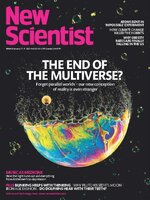 Jan 11 2025
Jan 11 2025
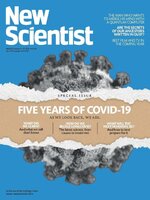 Jan 04 2025
Jan 04 2025
 Dec 28 2024
Dec 28 2024
 Dec 14 2024
Dec 14 2024
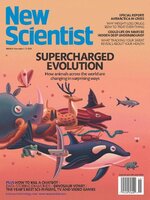 Dec 07 2024
Dec 07 2024
 Nov 30 2024
Nov 30 2024
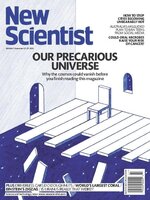 Nov 23 2024
Nov 23 2024
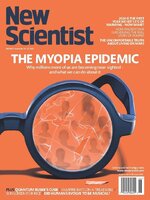 Nov 16 2024
Nov 16 2024
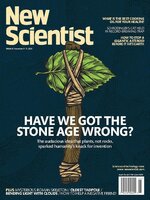 Nov 09 2024
Nov 09 2024
 Nov 02 2024
Nov 02 2024
 Oct 26 2024
Oct 26 2024
 Oct 19 2024
Oct 19 2024
 Oct 12 2024
Oct 12 2024
 Oct 05 2024
Oct 05 2024
 Sep 28 2024
Sep 28 2024
 Sep 21 2024
Sep 21 2024
 Sep 14 2024
Sep 14 2024
 Sep 07 2024
Sep 07 2024
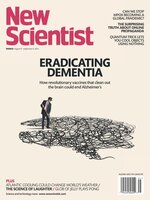 Aug 31 2024
Aug 31 2024
 Aug 24 2024
Aug 24 2024
 Aug 17 2024
Aug 17 2024
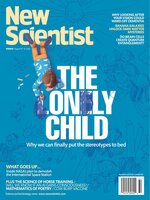 Aug 10 2024
Aug 10 2024
 Aug 03 2024
Aug 03 2024
 Jul 27 2024
Jul 27 2024
